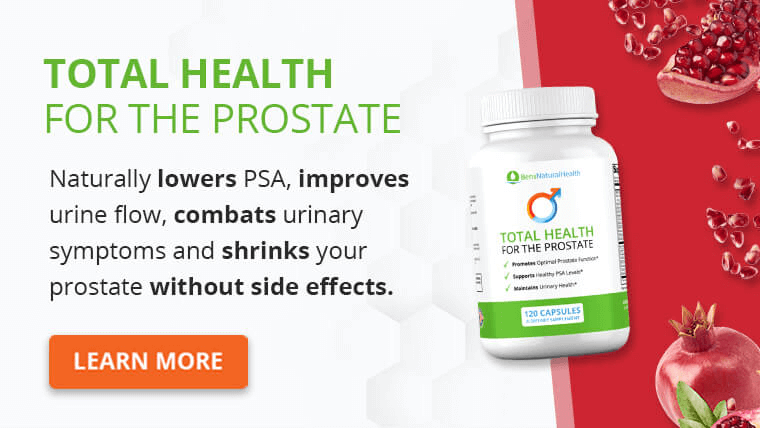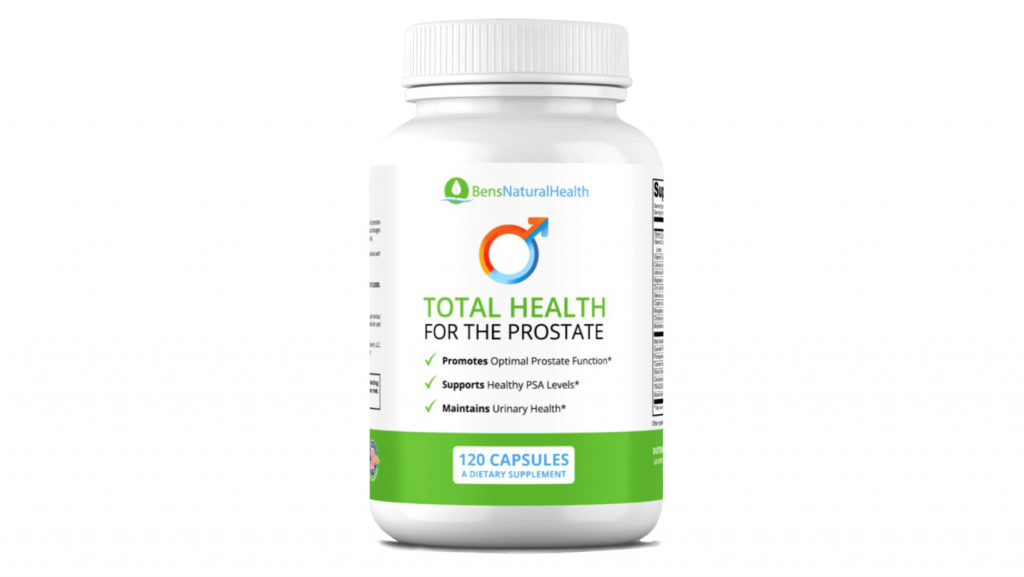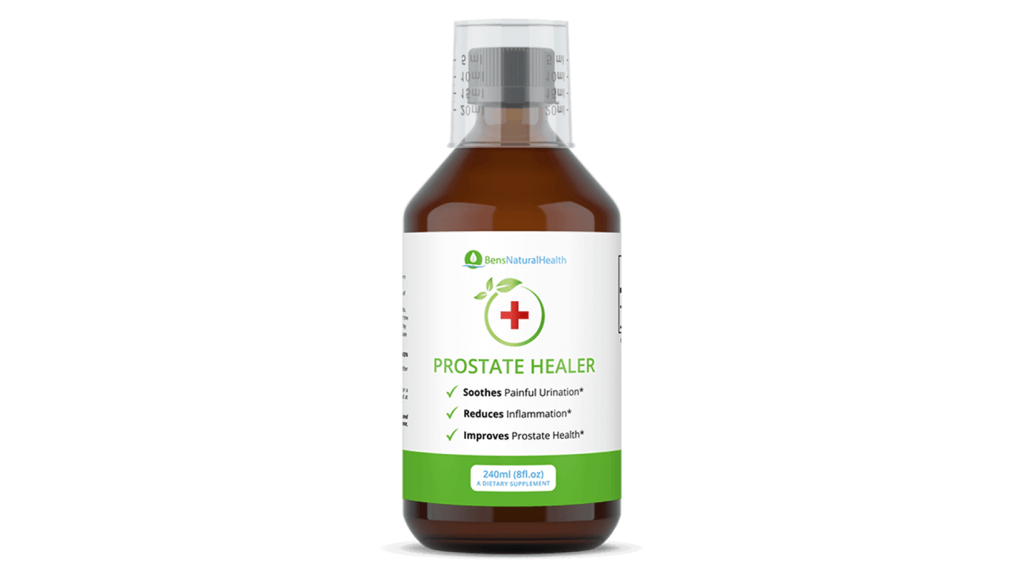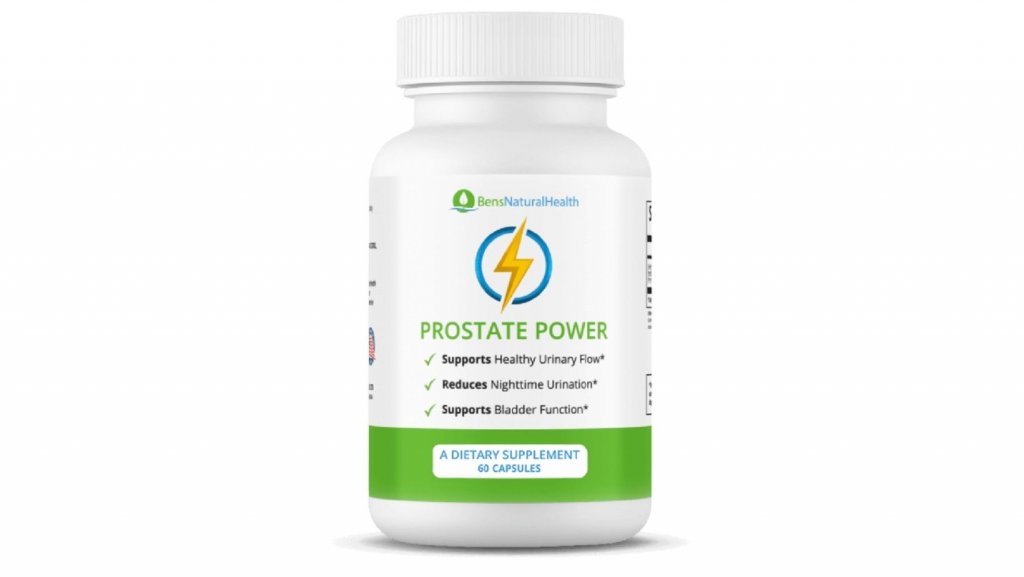You have probably heard about PSA if you’re over 40 years or starting to worry about your prostate health.
Many people wonder why doctors keep performing rectal examinations.
They already have a serum marker of prostate cancer.
Is it indispensable for the diagnosis? Or maybe an old habit modern medicine is not yet prepared to let go.
In this article, we are going to discuss what exactly PSA is. What it does in your organism, and why is the PSA test so important.
Additionally, we’re going to take a quick look at natural ways to lower your PSA, as well as what can skew a PSA test.

What is PSA?
PSA is short for Prostate Specific Antigen. It is a serine protease, an enzyme that breaks down proteins.
The leading role of the PSA in a man’s health is to liquefy the seminal fluid. Instead of having thick semen, appropriate levels of PSA make it more fluid.
It breaks down gel proteins in the seminal fluid, known as semenogelin 1 and 2. In doing so, PSA is useful to promote the movement of sperm cells, aiding the process of fertilization. In the blood, the enzymatic activity of PSA remains inhibited, though.
However, any enlargement of the prostate causes an increase in PSA. Among them, prostate cancer increases the levels by up to 10^5-fold.
However, many other benign enlargements can cause a rise in serum levels, too (1).
Thus, a high PSA level is useful for preventive services to detect a prostate problem.
Whether they are benign or malignant, it remains to be seen.
But the primary care physician should take PSA levels seriously. Especially in patients who experience a rapid and unexpected rise from baseline levels.
The PSA test is only one tool we can use to screen for early signs of prostate cancer.
Another common screening test, usually done in addition to a PSA test, is a digital rectal exam.
The prostate can be felt through the rectal wall.
Your health care practitioner will check for the lobes of the prostate and their symmetry and will check for any nodules, growths, enlargement, or pain.
Get Your FREE PSA Lowering Diet Plan!
- Naturally lower PSA levels
- Reduce nighttime trips to the bathroom
- Enjoy better bladder control and urine flow
What is a PSA test?
A PSA test is a measure of PSA levels in the blood. We can find this enzyme in the blood and semen. In the sperm, it performs the functions described above.
But the prostate may also release the protein into the blood, especially when it is larger than usual.
In most cases, a higher serum PSA is a sign of a enlarged prostate gland.
Thus, PSA tests are useful for the screening of prostate cancer. Moreover, it can be an excellent asset to guide diagnosis and treatment plans.
The average values of a PSA test usually depend on the patient. In general, a total PSA lower than 4 ng/mL is considered normal.
Still, some prostate cancer patients may have an active tumor and low PSA levels. Thus, the PSA test is only one part of the prostate cancer diagnosis.
In the majority of cases, it should be evaluated along with other biomarkers.
In the blood, PSA levels can be either free or bound to other molecules. That’s why one suitable measure is the free/total PSA ratio.
This one can be useful for suspicious patients with high PSA levels. And other diagnostic tools have also been described in the literature—for example, the Prostate Health Index and the 4KScore (2).
The PSA synthesis is deeply involved with androgens. Testosterone regulates the gene that encodes PSA proteins.
Thus, changes in testosterone can trigger changes in the prostate and PSA levels.
Even female patients with breast cancer may have circulating serum PSA when the disease is associated with androgen receptor activity (3).

What does a high PSA mean?
A healthy prostate keeps PSA confined in the gland tissue. When everything is normal, only a minute proportion of PSA leaks into the blood.
That’s why men younger than 50 years old usually have around 0.5 or 0.6 ng/mL.
However, PSA levels increase as men age. They can range from 1 to 4 ng/mL without raising any alarm.
After 4 ng/mL, it is recommended to evaluate other biomarkers. One of them is the free/total PSA ratio discussed above.
Still, keep in mind that very high levels do not necessarily mean prostate cancer.
According to studies, levels above 10^2 ng/mL are almost exclusively found in men with prostate cancer. But healthy men can have a large prostate, very high PSA levels, and no prostate cancer.
Thus, a high PSA result does not only mean prostate cancer. It can be raised by benign prostatic hyperplasia (BPH) and prostatitis, too.
In patients with advanced or localized prostate cancer, PSA can be a handy tool. It discriminates between various stages of cancer.
It is higher in patients with metastatic disease and can be used to evaluate the five-year survival rate. Thus, we can use it to measure life expectancy.
Moreover, men with prostate cancer and very high PSA have a higher risk of recurrence. In other words, they are more susceptible to having a relapse after treatment.
Elevated PSA levels before 50 years may also have a predictive value of prostate cancer 25 years later.
Still, even patients with rising or high PSA levels can be very healthy. That is why it is essential to use different PSA derivatives and imaging tests.
Along with PSA, they will provide a complete overview of prostate the patient’s prostate health (4).
Recent studies have also linked PSA levels and prostate cancer with thyroid cancer. However, the association is not yet clear (5).
Controversy surrounding PSA
All of the above points at PSA as a reliable prostate cancer detection tool. However, as PSA screening becomes more prevalent, it generates more controversy.
When they are not used appropriately, PSA levels can make doctors treat prostate cancer inappropriately.
Prostate cancer can be very slow-evolving. Many patients die from other reasons, and their condition does not affect their quality of life. This type of patient is better left alone.
If we perform a prostate biopsy, he may end up with chronic bleeding and pain in the urinary tract.
If we perform a prostatectomy, some patients may not be prepared to withstand a surgical procedure. Instead of improving their quality of life, we would be exposing them to serious side effects.
Besides the diagnosis of prostate cancer, what we really want is to reduce mortality. That’s why we need to consider PSA levels along with other factors. Doing so will increase the sensitivity and specificity of a single test.
Thus, urologists will be able to make more appropriate decisions and better recommendations for their patients.
After a long debate and many clinical trials, the American Cancer Society and the American Urological Association have released a series of recommendations on how to use PSA tests more appropriately.
Testing PSA levels at the age of 40 years old can be useful. At this stage, we can set baseline PSA levels to compare with future values.
Moreover, patients with high PSA values at this time may have prostate cancer in the future.
Still, a yearly measure is not recommended unless patients have urinary symptoms and other risk factors.
This measure is meant to reduce the overdiagnosis of prostate cancer and the discriminatory use of prostate biopsy (2).
Another way to improve the diagnosis of prostate cancer is through PSA density. This is obtained by dividing serum PSA levels by the prostatic volume.
And even before a prostate biopsy is made in highly suspicious cases, other tools can be used. One of them is the multiparametric MRI, a joint imaging technique to increase the positive predictive value for cancer (6).
The controversy is far from being over. The US Preventive Service Task Force has recently dropped back their statements against prostate cancer screening.
The importance of baseline values is now becoming more critical as a predictive tool. And there’s still much progress to be made to identify high-risk tumors as soon as possible. One of them is through ongoing advances in prostate cancer biomarkers that will potentially increase our capacity to diagnose and evaluate this malignancy (2).
What factors can skew a PSA test?
Before your PSA test, your doctor will likely give you a few recommendations. They are meant to obtain accurate results because certain factors can modulate PSA levels.
So, let us briefly review what can skew a PSA test and what you can to do to get precise results.
Remember that the PSA test is not a specific test for prostate cancer. As such, it can be higher than usual in prostatitis and BPH, as we mentioned above.
Anything that increases the prostate size may also increase your PSA levels. But other factors should be considered, too:
Medications
Certain medications may modulate the rate of PSA produced by the prostate. Some of them are prescribed for BPH, as in finasteride.
In this case, finasteride reduces PSA levels. As good as this may appear, it sometimes hides high-grade cancer.
Thus, your urologist may need to double your current PSA levels if you’re under this medication (7).
RELATED: What Medications Can Increase PSA Levels?
Urinary infections
Luckily, they are not very common in males. However, if you have a urinary tract infection, this can skew your PSA levels.
Thus, it is sometimes recommended to run a urine test along with the PSA test to rule out infections.
Similar to prostatitis, they cause inflammation and make the prostate release more PSA to the blood.
Sexual activity
PSA levels increase after ejaculation. The effect usually goes away after 24 hours, and it is minimal.
Still, it is recommended to abstain from sex 24 hours before a PSA test.
Pressure upon the prostate gland
Any type of pressure upon the prostate gland may increase serum PSA levels. For example, riding a bike for a long time or having a digital prostate examination.
Takeaway
If you have any of these factors, it is recommended to ask your doctor before performing a PSA test.
Chances are you will need to do it all over again if the results are skewed.

How to lower PSA naturally
As mentioned above, PSA is synthesized by the prostate and remains in the gland.
Only a minute fraction leaks to the circulation.
However, this fraction can be larger when the architecture of the gland is compromised.
We have also mentioned that androgens modulate the synthesis of this enzyme.
Thus, there are various ways to lower PSA levels:
Reverting the structural changes of the gland: For example, when we take out the gland or solve the inflammation process.
Modulating the effects of androgens
You can do this with androgen deprivation therapy and other natural treatment modalities.
Lifestyle changes
Some lifestyle changes can affect PSA levels dramatically. They may even help with other male problems, including erectile dysfunction.
So, if you want to regain or maintain your prostate health, follow these recommendations to lower your PSA levels. Different from finasteride, they won’t delay the early detection of prostate cancer.
Exercise and follow a healthy diet
By maintaining a healthy body, your hormonal profile will be healthy as well. Since your hormones are fundamental for prostate health, they will lower your PSA.
Studies show that a total of 3 hours of moderate physical activity every week may improve the survival rate in prostate cancer patients (8).
Manage your stress
If you exercise regularly, eat a healthy diet, managing your stress will also do the trick.
This was tested by researchers who evaluated how yoga and other relaxation methods modulated prostate cancer.
Patients under the treatment group ended up with a better PSA score (9).
Green tea
This is one of the beverages with the highest antioxidant profile. As such, green tea can revert oxidation and modulate inflammation in the prostate gland.
It takes care of your hormonal levels and reduces the risk of prostate cancer (10).
Ben’s Natural Health Prostate Supplements
Total Health

Ben’s Total Health is one of the leading prostate health supplements containing 23 clinically proven natural ingredients.
We specifically designed Total Health to lower PSA, shrink the prostate, and combat the urinary symptoms associated with BPH.

BPH is a common problem, often affecting men as they grow older. Statistics show that 50% of men over 50, and 90% of men over 80 will suffer the condition.
Clinically formulated, Total Health works to combat the root causes of prostate disease, helping to reduce nighttime waking, improve urinary flow and lower PSA in order to get rid of your prostate problems and restore your health.
Find out more about Total Health.
Prostate Healer

We formulated Prostate Healer to effectively combat BPH and prostatitis and provide symptomatic relief from urgency, frequency, and nocturia.
It works on the prostate, kidney, and bladder simultaneously, coaxing cells gently to resume normal function.
So, by this action, you’re fighting against prostatitis and BPH.
If you’re like many men that use the formula, you’ll see a reduction in the number of times you get up to go to the bathroom to urinate.
Plus, you’ll see an improvement in the flow of your urine.
Find out more about Prostate Healer.
Prostate Power

Our dietary supplement, Prostate Power, contains ingredients clinically proven to shrink an enlarged prostate and slow the progress of BPH and prostate disease.
The key active ingredients in Prostate Power have been shown in numerous clinical trials and meta-studies to shrink prostate volume, improve urine flow and decrease the risk of acute urinary retention.
Find out more about Prostate Power.
Why Choose Ben’s Natural Health Supplements?
At Ben’s Natural Health, our motto is to combine holistic healing with modern science.
Ben’s Natural Health is the world’s first high-quality, all-natural, scientifically proven clinical supplement company.
Our supplements are effective, natural and 100% side effect free.
Moreover, at Ben’s Natural Health, we have four rules for all our supplements:
- We only use the highest quality ingredients
- We only use them if they independent, peer-reviewed double-blind studies prove they work
- With all our supplements, we find a way to get every ingredient into a single bottle
- We always formulate them in clinically significant doses of the most bioavailable form
We pride ourselves on offering excellent customer service. We offer a free health consultation where you can ask questions and receive tailored advice from our expert health consultants.
Conclusion
PSA testing is a fundamental tool in the screening, diagnosis, and treatment of prostate cancer. However, there’s still much debate on how to use it more appropriately.
Various factors affect PSA production and release to the blood, either directly or indirectly.
Thus, it is recommended to interpret the results based on a baseline level and follow the recommendations by your doctor to obtain an accurate reading.
Explore More

Find out about our best-selling book, All About The Prostate: a definitive guide of scientifically proven and all-natural methods to improve prostate health.







